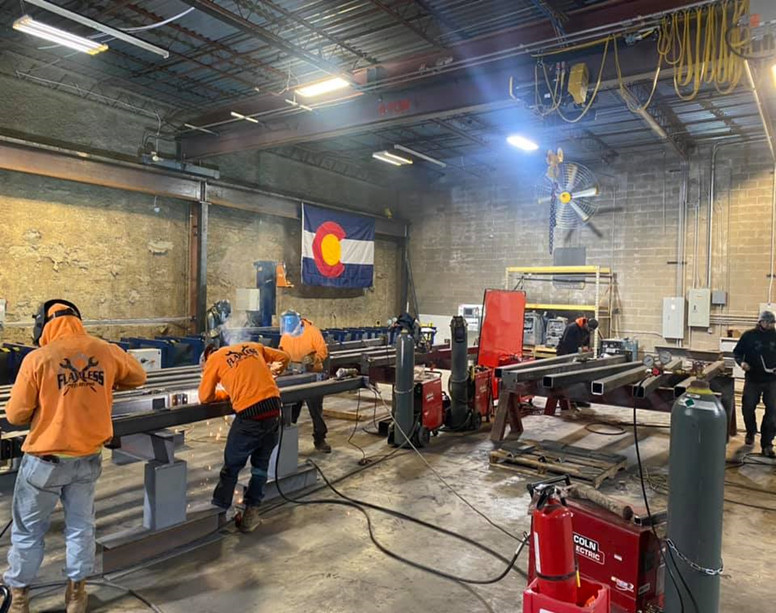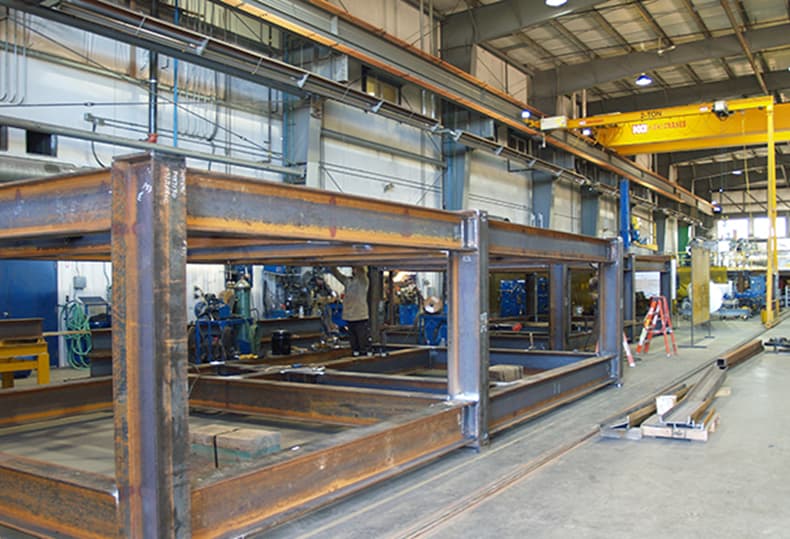Comprehensive Analysis of Cutting-Edge Techniques in Steel Fabrication Industry
As the steel fabrication market remains to progress, the combination of cutting-edge strategies has actually ended up being essential for remaining affordable and satisfying the needs of modern manufacturing requirements. From laser cutting improvements to the utilization of robotics and 3D printing in steel production, the landscape of construction techniques is quickly altering. With each innovation bringing its very own collection of advantages and difficulties, a comprehensive evaluation of these methods is extremely important for firms intending to simplify their processes, boost accuracy, and inevitably, elevate the high quality of their steel fabrication output. In this vibrant sector where modern technology plays a critical duty, comprehending the nuances of these innovative techniques is not simply an alternative yet a necessity for those aiming to advance in the ever-evolving globe of steel fabrication.
Laser Reducing Innovations
In the world of steel fabrication, laser reducing advancements have revolutionized the precision and efficiency of metal shaping processes. By taking advantage of the power of concentrated laser light beams, manufacturers can currently attain unrivaled levels of accuracy when puncturing various sorts of steels. This modern technology makes it possible for intricate layouts to be carried out with very little product wastage, making it an economical solution for industries calling for high accuracy elements.
One of the key advantages of laser cutting is its capacity to take care of a vast array of products, including stainless steel, light weight aluminum, and carbon steel, effortlessly. The procedure produces tidy, burr-free edges, eliminating the demand for extra ending up steps. The non-contact nature of laser cutting minimizes the risk of material contamination, resulting in greater high quality end items.
Additionally, laser cutting equipments can be configured to make swift, precise cuts, dramatically minimizing production time compared to traditional reducing methods. This rate and accuracy make laser reducing particularly ideal for mass production settings where effectiveness is extremely important. As innovation proceeds to advance, laser cutting is poised to play a significantly vital function in the steel fabrication market.

CNC Machining Innovations
The advancement of CNC machining technologies has introduced a brand-new era of precision and performance in the steel fabrication sector. Computer System Numerical Control (CNC) devices have changed steel fabrication by providing unequaled precision and repeatability in the manufacturing procedure. Alpha reo. One of the essential innovations in CNC machining is the integration of sophisticated software application systems that make it possible for real-time surveillance and changes, leading to enhanced productivity and quality assurance
In addition, the development of multi-axis CNC machines has permitted the fabrication of complex steel components with intricate designs that were previously challenging to produce. These devices can carry out a broad range of machining procedures, consisting of milling, exploration, transforming, and grinding, all with high degrees of accuracy.
Additionally, the consolidation of automation and robotics in CNC machining has streamlined production processes, reduced lead times, and minimized the margin of mistake. This combination of innovative technologies not just improves performance but additionally makes certain constant high quality throughout all produced steel components. To conclude, CNC machining technologies proceed to drive improvements in the steel construction sector, setting brand-new requirements for precision and performance.
Automated Welding Technologies
Automated welding innovations have actually transformed the steel fabrication sector, improving efficiency and accuracy in the welding process. These cutting-edge innovations utilize computer-controlled systems to automate the welding procedure, bring about greater productivity levels and improved try this website weld quality. One of the vital benefits of automated welding is the capacity to carry out intricate welds with constant accuracy, reducing the chance of errors and revamp.
Robotic welding systems are at the leading edge of automated welding modern technologies, providing unmatched speed and accuracy. These systems can deal with a vast array of welding tasks, from simple to elaborate, easily (steel fabrication melbourne). By using advanced sensors and software program, robot welders can adapt to variations in product and joint geometry, ensuring an uniform and trustworthy weld
Additionally, automated welding modern technologies boost workplace security by decreasing the direct exposure of human welders to harmful fumes and intense warm. As the steel manufacture industry remains to advance, incorporating automated welding technologies will be necessary for firms looking to stay competitive and satisfy the expanding needs for high-quality welded products.
Robotics Combination in Fabrication
Making use of robot systems in manufacture procedures has become a pivotal approach for enhancing efficiency and precision in modern manufacturing environments. Robotics integration in steel fabrication offers a myriad of benefits, including enhanced efficiency, enhanced quality assurance, and boosted safety and security actions. These innovative robot systems are furnished with advanced sensors and shows capacities, permitting them to execute detailed tasks with a high degree of precision and repeatability.
Among the crucial benefits of robotics integration in steel fabrication is the capacity to automate recurring tasks, such as material handling, reducing, welding, and setting up processes. This not only quickens manufacturing cycles but also lowers the risk of human error, bring about greater overall item high quality. Additionally, robotics can operate 24/7, considerably boosting manufacturing outcome and meeting tight project due dates.

3D Printing in Steel Production
Having actually transformed the steel construction industry with robotics integration, the burgeoning exploration of 3D printing in steel manufacturing is poised to additional development the realm of modern production methods. 3D printing, additionally referred to as additive manufacturing, uses extraordinary design flexibility and intricacy, allowing the creation of complex steel structures that were formerly unattainable via typical production approaches. By making use of computer-aided style (CAD) software, producers can precisely control the layer-by-layer deposition of steel product, resulting in get rid of improved performances and geometries.
One of the vital advantages of 3D printing in steel production is its capability to reduce product waste substantially. Unlike subtractive manufacturing procedures where excess material is cut away, 3D printing just makes use of the essential quantity of steel needed for the last part. This effectiveness not only causes cost savings yet additionally lines up with sustainable production techniques by minimizing ecological impact.
Additionally, 3D printing allows Get More Information rapid prototyping and personalization, enabling the production of tiny sets of intricate steel elements with brief lead times. As the innovation continues to mature and come to be extra easily accessible, its combination into mainstream steel fabrication procedures is anticipated to drive technology and efficiency across the industry.
Final Thought
To conclude, the steel construction industry has seen substantial improvements in strategies such as laser cutting, CNC machining, automated welding, robotics assimilation, and 3D printing. These sophisticated innovations have revolutionized the method steel products are manufactured, causing increased cost-effectiveness, accuracy, and efficiency. Proceeded financial investment in these cutting-edge techniques is important for the market to remain affordable and satisfy the demands of modern production processes.
As the steel fabrication industry proceeds to advance, the assimilation Visit Website of cutting-edge techniques has ended up being important for remaining competitive and fulfilling the demands of modern manufacturing requirements.One of the essential advantages of laser cutting is its ability to manage a broad range of materials, including stainless steel, light weight aluminum, and carbon steel, with ease.Automated welding technologies have actually reinvented the steel fabrication industry, boosting efficiency and accuracy in the welding process.Having actually revolutionized the steel manufacture market through robotics assimilation, the expanding expedition of 3D printing in steel production is poised to more breakthrough the realm of modern-day manufacturing methods.In conclusion, the steel fabrication sector has seen considerable innovations in techniques such as laser cutting, CNC machining, automated welding, robotics assimilation, and 3D printing.